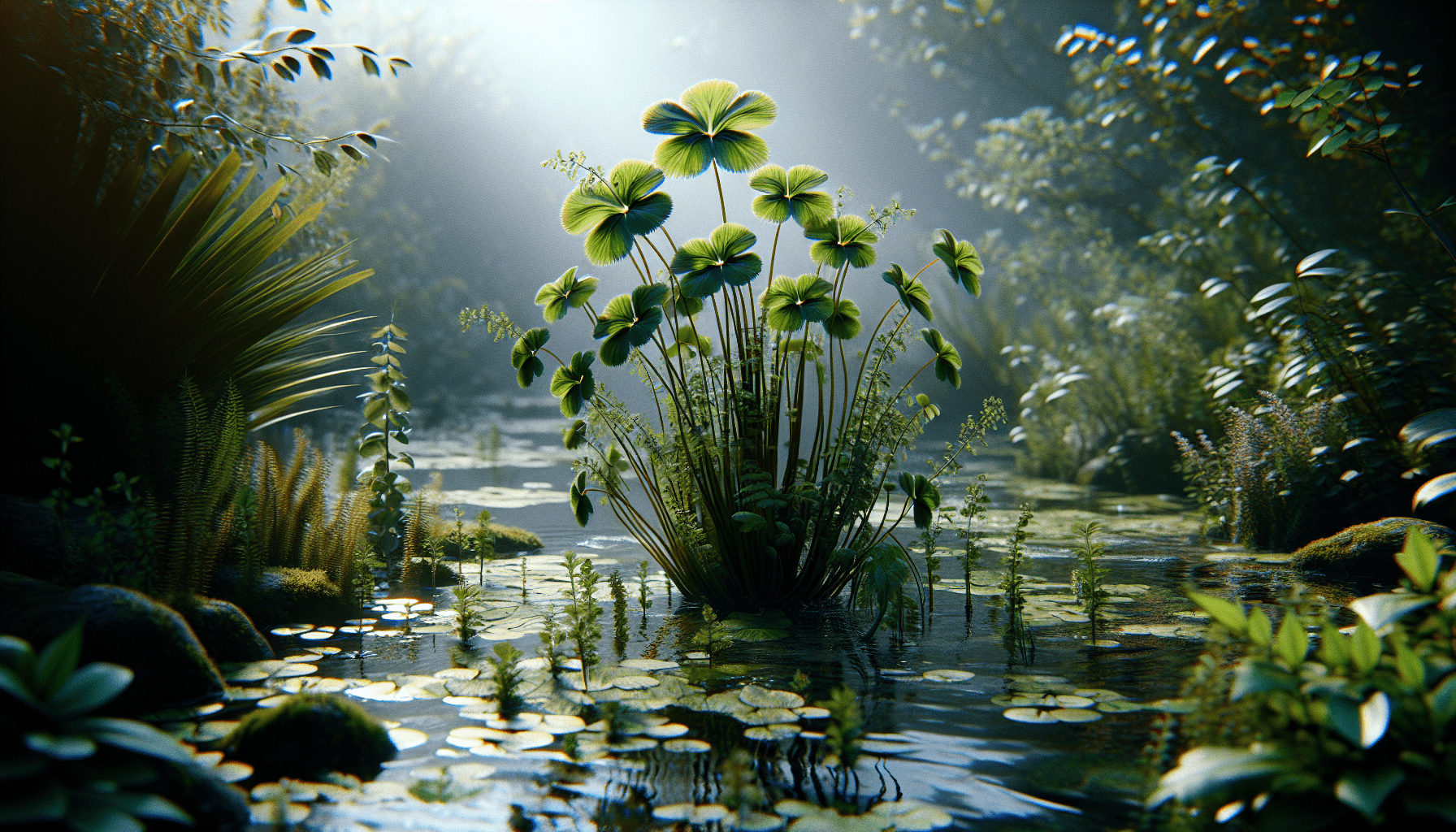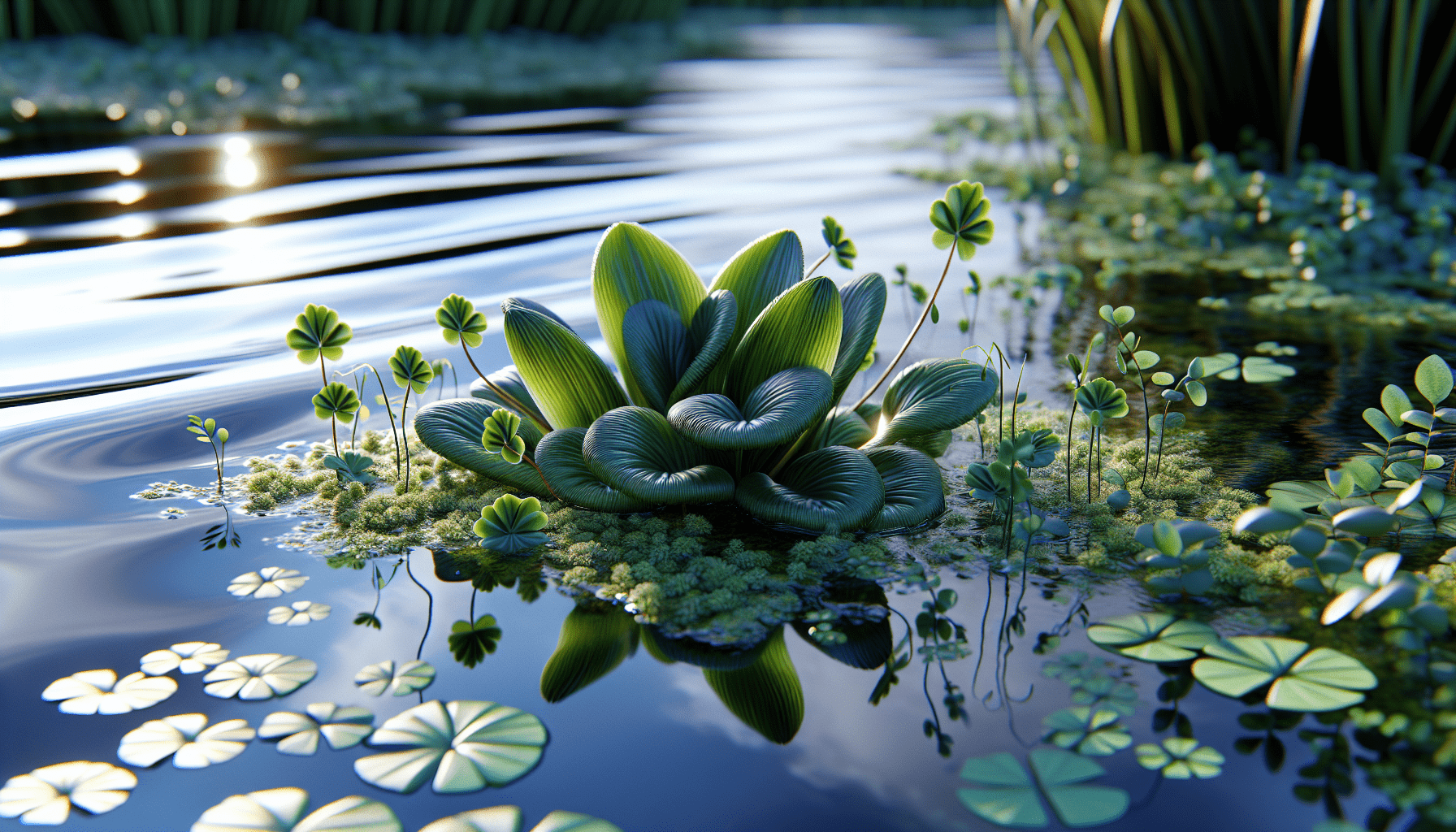In the vast and diverse realm of aquatic flora, a particular species, Littorella Uniflora, often remains enigmatic and underexplored. This aquatic weed, known for its adaptability and survival prowess, is the focus of this in-depth exploration. Through the course of this scholastic examination, you will be enlightened about its characteristics, its habitats, and why it is flora of environmental concern. While generally referred to as a ‘weed,’ this term is perhaps a misnomer when taking into account its ecological importance, and you will discover a comprehensive perspective of Littorella Uniflora in this intriguing exploration.

Description of Littorella Uniflora
Littorella uniflora, also known as American shoreweed, is an aquatic perennial plant species that attracts attention for its uniqueness among its plant kindred. Although it is referred to as a ‘weed’, it is anything but intrusive or detrimental to its surroundings.
Physical Characteristics
Littorella uniflora stands out with its peculiar physical form, which is characterised by long, slender, and linear leaves that extend in a rosette from a centric location. Each leaf, a testament to the intricate design of nature, spans a length of about 10 cm and is less than half a cm wide, giving it a blade-like appearance.
Habitat and Distribution
Littorella uniflora is found frequently around North America and Europe. This aquatic plant thrives in freshwater habitats, particularly in low nutrient lakes, ponds, and slow moving streams.
Growth and Reproductive Habits
This species often forms considerable and long-lasting stands in shallow waters. Littorella uniflora reproduces through seeds and vegetative means, and most dramatically during its flowering period wherein slim, solitary spikes rise from the water and present a veil of subtle white or greenish flowers.
Ecological Role of Littorella Uniflora
A quintessential element of freshwater habitats, Littorella uniflora has a profound influence on the ecology of the ecosystems it inhabits.
Effects on Water Quality
Its long leaves, sprawling in all directions, play a crucial role in filtering the water. This helps in maintaining the water quality by reducing sediment suspension and abating eutrophication, the process where water bodies receive excess nutrients leading to disproportionate growth of plants and algae.
Influence on Aquatic Biodiversity
Littorella uniflora not only preserves the water quality, but also enriches the biodiversity of the aquatic ecosystem. Its presence aids in the survival and proliferation of various bacterial colonies, algae, and other small invertebrates, which are paramount to the aquatic food web.
Contribution to Habitat Formation
Additionally, since Littorella uniflora grows profusely in clusters, it serves as the bedrock for a particular micro-habitat within the larger ecosystem. It creates refuges for young fish and other small aquatic fauna, thereby enhancing the structural complexity of habitats.
Classification and Taxonomy of Littorella Uniflora
Understanding the classification and taxonomy of Littorella uniflora is integral to studying its role in the natural world.
Family and Genus
Littorella uniflora is part of the Plantaginaceae family, commonly known as the plantain family. This family houses over 90 genera encompassing roughly 2000 species. Littorella, the genus to which our species of interest belongs, is distinguished by its strictly aquatic nature.
Botanical Naming and Etymology
The botanical name ‘Littorella uniflora’ clearly articulates its nature: the Latin ‘littorella’, meaning ‘little shore’, points to its preference for waterside habitats, while ‘uniflora’ suggests its distinctive single-flower trait.
Related Species
Though Littorella uniflora stands out in its genus, it shares common traits with other family members, most of which are terrestrial. Its closest relative might be Plantago, a terrestrial genus that also contributes importantly to biodiversity.

Cultivation and Care of Littorella Uniflora
Though this plant largely sustains itself in natural environments, cultivating Littorella uniflora at home and ensuring its proper maintenance is a different undertaking requiring more specialized attention.
Optimal Growth Conditions
These plants prefer acidic environments and prosper in substrates rich in fine material like gravel or sand. Significant light exposure garners the best results, though they can adapt to diffused or less intense light conditions.
Propagation Methods
Reproducing this plant requires only some parts of the plant—usually a runner accompanied by a cluster of leaves. Planting this fragment directly into the gravel ensures fresh growth. Additionally, Littorella uniflora’s natural tendency to flower allows propagation via seeds.
Dealing with Pests and Diseases
Like any plant, Littorella uniflora is susceptible to pests and diseases. Monitoring plant health and intervening at the early stages of infestation or disease is crucial.
Uses of Littorella Uniflora
Littorella uniflora has been utilized in various ways, reflecting the versatility that often comes with natural resources.
In Aquascaping and Water Gardens
Its unique form and growth pattern make it a popular choice for aquascaping and water gardens. Littorella uniflora adds structural diversity to such settings while simultaneously enhancing habitat quality for smaller, more vulnerable fauna.
In Traditional Herbal Medicine
While not its primary use, there have been instances where Littorella uniflora was used in traditional herbal medicine, demonstrating another dimension of its utility.
As Indicator Species in Ecological Studies
An essential function lies in its role as an indicator species, providing insights into the health and changes in aquatic ecosystems. Researchers and ecologists monitor its presence, distribution, and health to make inferences about water quality and biodiversity.
Littorella Uniflora in Aquatic Environments
Understanding how Littorella uniflora interacts within aquatic environments reveals valuable insights.
Predominant Ecosystems
Littorella uniflora commonly populates oligotrophic lakes—lakes low in plant nutrients and high in dissolved oxygen. Creating a mosaic of dense vegetation, it plays a key role in structuring these ecosystems.
Interaction with other Aquatic Species
It interacts symbiotically with various aquatic species. For instance, it provides cover and breeding sites for numerous invertebrates and fish, making it an integral part of these communities.
Hazards and Benefits to its Environment
While Littorella uniflora purifies water and has a positive influence on biodiversity, unchecked growth could potentially cause ecological imbalance. This highlights the need for balanced management practices to make sure it provides more benefits than harm in the long term.
Threats to Littorella Uniflora
Despite its resilience, Littorella uniflora faces significant threats that could undermine its survival.
Effects of Climate Change
Climate change, through alterations in temperature and precipitation patterns, can affect the habitat conditions and distribution range of this species, potentially constraining its survival and growth.
Impact of Invasive Species
Invasive species are another significant threat. Introduced species with similar habitat preferences could outcompete Littorella uniflora, drastically reducing its populations.
Potential Impact from Pollution
Water pollution, especially due to excessive nutrients or hazardous substances, poses significant threats to Littorella uniflora, as well as to the entire aquatic ecosystem.
Conservation Strategies for Littorella Uniflora
Given these threats, proactive conservation measures have become more important than ever.
Habitat Restoration
Restoring altered or polluted habitats is of prime significance in preserving and increasing the populations of Littorella uniflora. This includes controlling sources of pollution, ensuring appropriate nutrient levels, and managing competition with invasive species.
Propagation and Replanting Efforts
Collecting seeds from healthy populations and planting them in favourable conditions contributes to population enhancement. Community engagement can play a pivotal role in these endeavours.
Public Awareness and Education
Equipping the public with knowledge about this unique plant, its roles, and threats is a powerful conservation tool. Use of media and outreach programs can spark interest and encourage participation in conservation activities.
Scientific Research on Littorella Uniflora
As an important ecological agent, Littorella uniflora has been a subject of scientific interest.
Current Studies and Findings
Current studies are focused on understanding the growth mechanisms, impacts of various threats, and contribution to ecosystem services. Recent findings suggest significant roles of Littorella uniflora in carbon sequestration and nutrient cycling.
Potential Future Research Areas
Future research may explore the impact of climate change on the geographical range, the potential to adapt to changing environments, and in-depth understanding of its complex interactions within aquatic ecosystems.
Historical Interest and Research
Historically, research on Littorella uniflora has boosted our understanding of aquatic vegetation dynamics, plant adaptations to aquatic environments, and patterns of diversity in freshwater ecosystems.
Littorella Uniflora’s Economic Impact
More than just an ecological marvel, Littorella uniflora also has important economic implications.
In the Ornamental Plant Trade
One of its significant contributions comes from its aesthetic appeal which has made it popular in the ornamental plant trade. It adds texture and contrast to aquariums and water gardens, and is therefore traded globally.
Potential Contributions to Bioengineering
Another potential avenue lies in bioengineering. Its ability to thrive in low nutrient conditions could be explored to come up with resource-efficient cultivation strategies for other plants.
Effects on Aquaculture
By improving water quality and helping to sustain biodiversity, it indirectly influences the productive capacities of aquaculture systems and hence has potential economic impact in this sector.
In conclusion, Littorella uniflora is a critical aquatic plant that impacts the ecological, scientific, and economic domains. However, it faces significant threats that need to be managed to secure its future. More research is required to fully understand its significance and potential, and to enable its preservation and sustainable use.